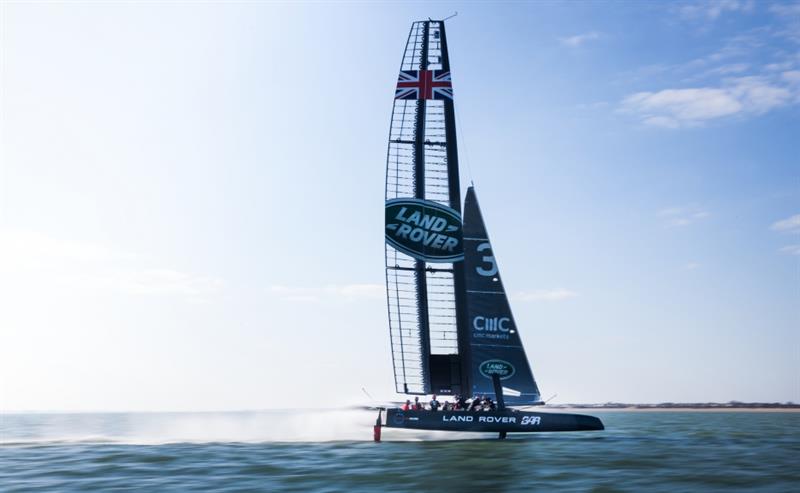“The prototyping process is really useful when we are trying to develop something,” said Land Rover BAR’s chief technology officer, Andy Claughton. “It allows us to get our hands on it, put it in place on the boat or link it up with other parts of the system and see potential issues and refine the design before we commit to the production of the final piece.”
One example is the end cap for the boat’s bowsprit. This is a complex shape, designed to reduce aerodynamic drag. Previously this would have been built in carbon fibre to a high finish and standard at great expense. Now, once the design has been developed it can be produced cheaply in a handful of hours.
“But the top level of our 3D printing programme is the metal additive manufacturing supplied by Renishaw,” added TIG project manager, George Sykes of PA Consulting. “The manufacture of custom parts in metal is the cutting edge of this technology.”
One of the earliest components the Land Rover BAR team created using this technology was a custom sheave case for the pulley in the daggerboard lift line. There was a high compressive load involved and it needed good resistance to wear; so metal was the ideal choice. All high strength metals have a higher density than carbon fibre, so to keep weight down the final design was hollow. It would have been very difficult to make this part any other way than additive manufacturing.
“The potential of additive manufacturing in terms of saving weight and improving efficiency is tremendous,” Claughton explained. “For example, we took a long hard look at our hydraulics system. Before 3D printing came along all the parts in this system would have been manufactured by taking metal away from a solid block. The shapes that you can create with this method are limited, so the design is limited and so too is the efficiency.
“Hydraulic fluid doesn’t take kindly to going around hard corners for instance, and there is a loss of power when it has to do so. With traditional techniques this might be the only way you can manufacture the part, but with additive manufacturing you can build it with smooth rounded corners that significantly improves efficiency in the fluid transfers involved.”
Renishaw has manufactured several parts for the hydraulics and, it is said that the weight in a new AM manifold design was reduced by 60%, with an increase in performance efficiency of better than 20%.
David Ewing, product marketing engineer at Renishaw’s Additive Manufacturing Products Division, said: “The best applications are ones which use the minimum amount of material to achieve the design requirements, offer a functional benefit in service and have been designed with the manufacturing method in mind. Our work on hydraulic parts for the team is a perfect example.”












